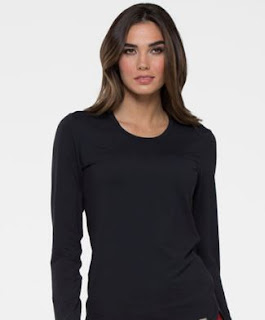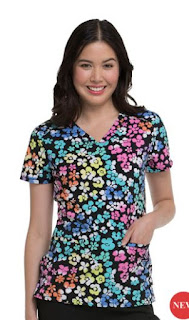Do You Have the Blues When it Comes to Your Shoes?
By Jordie Papa
 |
| Image courtesy Public Domain Pictures |
Medical professionals work long, hard hours while
mostly standing on their feet. This causes many in the medical profession to
complain about sore feet and swollen ankles.
Face it, the lowermost extremities are some of the most complicated
parts of your body. With 26 bones, 22
joints and more than a hundred muscles, tendons and ligaments bearing the
weight of your entire frame, is it any wonder why the biggest complaint many
medical professionals profess is that their dogs ache after their shift is
done?
If you routinely experience sore feet, the culprit
could be your shoes. Especially if you
buy the cheapest footwear on the shelves, foot strain can be magnified. Cheap shoes offer little when it comes to
arch or ankle support. The soles and heels
of cut-rate shoes do nothing to cushion the repetitive stress your feet have to
deal with day in and day out. This often
makes the simple act of walking or standing a form of torture. As a result, cheap shoes can cause a number
of foot ailments, including blisters, bunions, corns, Achilles tendinitis, plantar
fasciitis and bone spurs.
Are
Your Shoes at the Root of Your Blues?
The Arch Enemies – Many of the maladies described
above are a direct result of shoes with little or no arch support. When your arches aren’t sufficiently supported,
this can cause the muscles of the plantar fascia to become strained. Poor arch support and shoes with open heels
can quickly turn this condition from strain to pain, that can eventually lead
to plantar fasciitis. Should this
debilitating condition occur, the road to recovery can be long and hard. The simple solution is to avoid this
condition by wearing shoes with closed heels and an insole with adequate arch
support.
Sole
Man
 |
| Image courtesy of Uniform Destination |
Another culprit that can lead you down the road to
foot pain is choosing the wrong soles.
While most people believe that flexible soles provide better support if
you spend most of the day on your feet, the opposite is true. Studies have shown that firm soles are better
able to align the ankles and limit the range of motion to which your feet are
subjected. If you spend your shift walking on tile floors, you might even want
to invest in shoes with rocker-bottom soles.
The rocker-bottom design makes sure that neither the ball of your foot
nor your heel impacts the ground. This
reduces strain by equally distributing the pressure along the entire length of
the foot instead of concentrating all of it on the heel and toe.
Who
are You Calling a Heel?
While high heels have no place on the ward, neither do
wafer-thin heels. Thin heels focus the
bulk of your body weight aft, resulting in added strain to both the plantar
fascia and calf muscles. Heels of a half inch to an inch help correct this
imbalance while cushioning every footfall.
If you constantly complain of sore feet even with adequate arch support,
take out a ruler and measure the thickness of your shoe’s heels.
Putting
You in a Bind
Another cause of chronic foot pain has to do with
pressure. Wearing shoes that are too
tight, cuts off circulation and puts undue strain on your arches. It’s also the leading cause of blisters,
corns and bunions. On the other hand,
wearing shoes that are too big can cause foot cramps, ankle strain and
scrunched toes. Ideally, your shoes
should encase your feet without crushing the life out of them or allowing too
much wiggle room. No matter how stylish,
if a pair of shoes you’re considering aren’t comfortable the first time you try
them on, don’t delude yourself into thinking you’ll break them in. They could wind up doing you in with every
painful step you take.
Sock
It to Me
 |
| Uniform Destination |
Your
Foot Soldiers
Walking is like being on a forced march, with the
average adult taking between 8,000 to 10,000 steps per day. That’s a lot of repetitive stress under the
best of conditions. Adding inadequate
footwear to the equation is a recipe for disaster. When it comes to surviving the rigors of a
long shift on your feet, you need all the help you can get if you hope to avoid
the blues when it comes to your shoes.
Uniform Destination offers a complete selection of
shoes and socks designed to help busy medical professionals deal with the strain
of standing on their feet all day long.
Jordie
Papa is owner of Uniform Destination with four locations in North Florida.


If you're feeling run down, your shoes could be to blame.
ReplyDeleteVery entertaining and useful information at the same time. I am on my feet a lot and good, properly fitted shoes and socks for the right purpose make a huge different to my feet. Thanks!
ReplyDelete